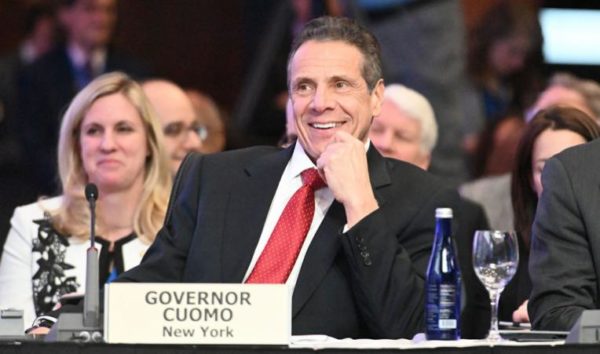Washington, D.C., is a “federal enclave” carved out of Maryland and Virginia, an odd political subdivision – and the drumbeat has grown to convert the city into a state.
It’s been a quarter-century since Congress last explored the idea of the nation’s capital entering the union as the 51st state. But, with Democrats back in control of the House, it’s a priority of many liberals, including House Speaker Nancy Pelosi, D-Calif. More than half of the House now supports awarding Washington statehood. The House Oversight Committee recently convened a hearing to explore the possibility of creating a new state for the first time in 60 years.
Let’s start with the name.
Every state gets two statues inside the U.S. Capitol. But, since it’s not a state, the District of Columbia gets only one – and that honor came just a few years ago. A statue of abolitionist Frederick Douglass – who lived in Washington – greets tourists in the U.S. Capitol Visitor’s Center. And, if D.C. ever becomes a state, the plan is to name it after Douglass. Think “WDC,” just as you would now. The city would become “Washington Douglass Commonwealth.”
Many liberals support statehood for D.C. – especially members of “the Squad,” who often focus on what they see as political injustices.
An image campaign is already underway. Rep. Rashida Tlaib, D-Mich., said last week at a hearing that she’ll fly an American flag bearing 51 stars outside her Capitol Hill office.
“To deny the statehood of the District of Columbia is to deny the impact of slavery in America,” said Rep. Ocasio-Cortez, D-N.Y., at the hearing.
What Ocasio-Cortez referenced was the District of Columbia Compensated Emancipation Act. Congress approved a measure and President Abraham Lincoln signed into law a plan to emancipate slaves in Washington on April 16, 1862. This was a few months before Lincoln crafted the Emancipation Proclamation. Many slaves came to Washington to escape slavery.
But, most Republicans have opposed making D.C. a state.
“Congress cannot admit D.C. legislatively,” said Rep. Jim Jordan, R-Ohio. “If you want to change it, its remedy means amending the Constitution of the United States.”
Jordan said the geographic dimensions of the District of Columbia were spelled out in Article I, Section 8 of the Constitution. It specifically outlined a federal district “not exceeding ten Miles square” to serve as “the Seat of Government of the United States.”
The founders cut up the District of Columbia from parts of Maryland and Virginia, the Potomac River snaking through the middle. Over time, people flocked to the District of Columbia. One part was even known as “Washington City.”
TLAIB VOWS TO DISPLAY ALTERED AMERICAN FLAG WITH 51 STARS IN SUPPORT OF DC STATEHOOD
It was thought that the hamlets of Georgetown and Alexandria, Va., would function as independent communities inside the District of Columbia. Alexandria prospered because it was a port and the Potomac became unnavigable north of there. The federal government retroceded the Virginia portion of the District of Columbia to the Commonwealth in 1848. Most of the “Virginia” section of D.C. is now comprised of Old Town Alexandria and Arlington County, Va. Stone markers have continued to dot the old boundaries of D.C. in Virginia. One such location is in a church parking lot off of King Street — the main thoroughfare in Alexandria — and another, close to the King Street Metro Station in Old Town.
But, here’s the heart of the problem for the District of Columbia: It has no vote on the House floor and no senators. It’s not a state, so it can’t.
Non-voting Del. Eleanor Holmes Norton, a Democrat, has represented the city in the House since 1991. But, as a “delegate” to Congress, Norton has been barred from voting on the House floor. House Democrats have allowed non-voting delegates such as Norton and other similar members from Guam and Puerto Rico to vote in a special, parliamentary construct known as “The Committee of the Whole,” but it’s not quite the same. Norton can serve on committees and introduce bills. She has an office on Capitol Hill. But, there is no vote for D.C.
The Senate hasn’t officially recognized any such non-voting persons, even though D.C. has elected “shadow senators.”
In short, the city has had no vote in Congress, yet its residents have paid federal taxes.
“For Washington, D.C., taxation without representation is more than just a catchy hashtag or bumper-sticker slogan,” Rep. Ayanna Pressley, D-Mass., said at the hearing.
In the 1990s, the D.C. city council voted to plaster the phrase “taxation without representation” across the city’s license plates. Residents could opt out – including then-President Bill Clinton. The verbiage never appeared on the presidential limo. The other option for the plates was the anodyne “celebrate and discover.”
The political makeup of Washington, D.C., has been key to the statehood debate. Washington current has about 700,000 residents, making it more populous than Vermont or Wyoming. Every state scores at least one House member. But, the new state would receive two senators – the same as California or Texas. And, due to the city’s progressive leanings, it’s almost a foregone conclusion that the senators would be Democrats. The lack of balance has concerned Republicans.
World War II, the attack on Pearl Harbor, the Cold War, the geostrategic importance of both Alaska and Hawaii and oil reserves in the former accelerated the push for statehood in the 49th and 50th states.
The U.S. admitted Alaska in January 1959. Hawaii joined in August 1959. Many Hawaiians thought at the time that it would become the 49th state, not Alaska. There was a prominent record label in Hawaii called “49th State” which marketed luau music. But, statehood hinged on two powerful people: Senate Majority Leader and future President Lyndon Johnson, D-Texas, and House Speaker Sam Rayburn, D-Texas. They worked to pair the admission of Alaska with the admission of Hawaii, just months apart.
It was a compromise, with the expectation that one state would lean toward the Democrats with the other leaning toward the Republicans. But, something strange happened. Back in the late 1950s, Alaska was supposed to be the blue state and Hawaii the red state. In modern days, Alaska has been more conservative and Hawaii more liberal – although both have had governors, senators and representatives of the other party, even in recent years.
Still, the compromise worked.
CLICK HERE TO GET THE FOX NEWS APP
The Alaska-Hawaii experience would be worth noting. At this point, there has been no “offset” to D.C.’s liberal political base. Even statehood for Puerto Rico would likely result in an influx of Democrats to Capitol Hill. No other “candidate” territory is seen as conservative.
Politics is all about compromise. As a result, the lack of political balance likely poses the biggest impediment to D.C. statehood.



